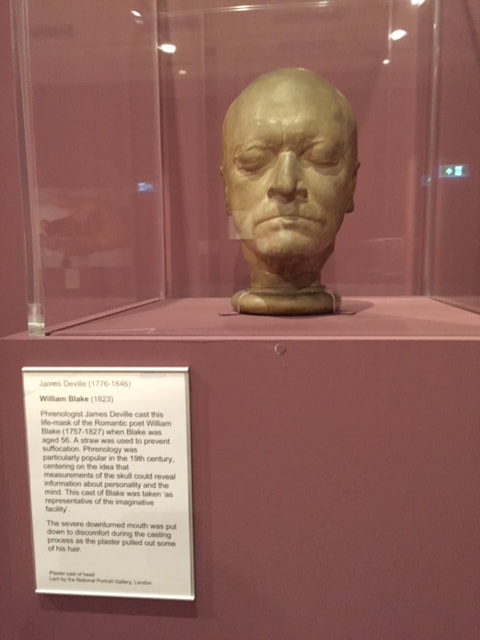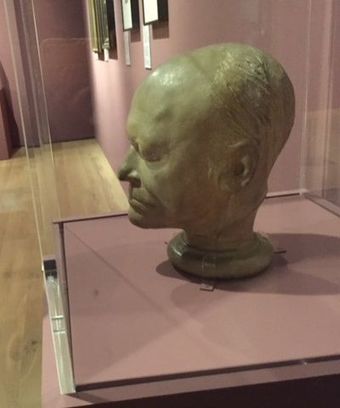| The 'Flesh' exhibition at the York Art Gallery a few months ago featured a plastered cast of the head of the poet and painter William Blake (1757-1827) by the sculptor and phrenologist James Deville (1776-1846). It was made in the year 1823 when Blake was 56 years old. Fitting with phrenology's credo of relating psychological function with the form and proportions of human skull, this head cast of William Blake was held to be "representative of the imaginative faculty" by Deville. I can't say I disagree with his choice of subject. As the stated in the description of the work, Blake's stern facial expression was attributed to situational and not dispositional factors. Apparently, the process of having a head cast made is not only uncomfortable (one has to sustain one's breathing through a straw) but also painful as a lot of hair is pulled out by the plaster. This work, which belongs to the primary collection of the National Portrait Gallery, is an early attempt at investigating the neuroscience of imagination as it relates the capacity to imagine with brain-relevant variables. |
|
0 Comments
Leave a Reply. |
This is ...
an entirely unstructured & zany exploration of all things that are or could be relevant to understanding the human imagination. Archives
March 2021
Categories
All
|



 RSS Feed
RSS Feed